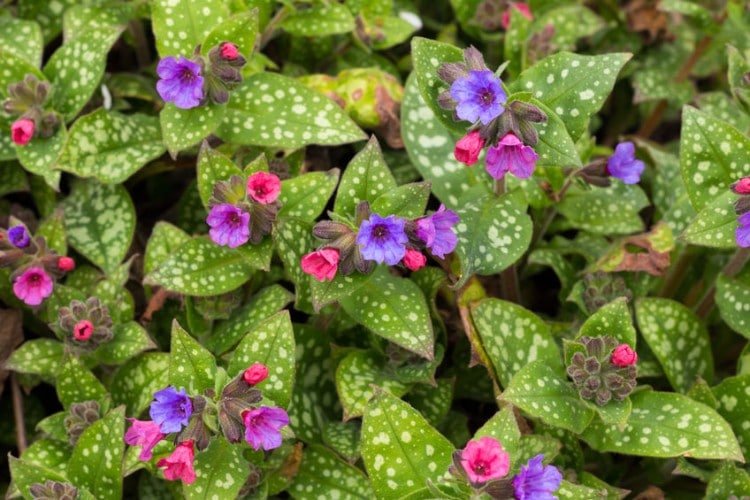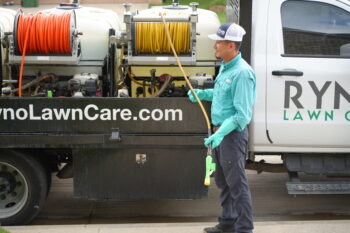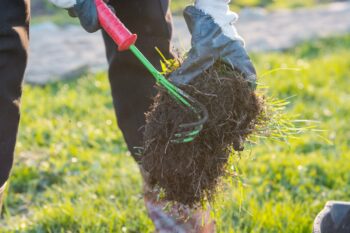Plants come in a variety of shapes, sizes, and colors, and they easily brighten up any space. If you want to accent a shaded area in your yard, or bring a burst of life to your home or office, perennial shade plants are your best bet because they can thrive in minimal sunlight.
What is a Perennial Plant?
Perennial plants are a type of flowering plant that live for more than two growing seasons. Unlike annual plants that complete their life cycle in a single growing season, perennial plants persist for several years, producing flowers and fruits year after year.
If you’re interested in annuals, read one of our other articles titled, “Full Sun Annuals That Bloom All Summer.”
Perennial plants grow in both summer and spring, and tend to go dormant during winter and autumn. They are an excellent choice for gardeners who want to create low-maintenance gardens that offer color and interest year after year.
Many different types of perennial plants exist, from sun-loving perennials like salvia and coneflowers to shade-tolerant perennials like hostas and astilbes.
One of our services is flower bed clean-up. Contact us today for details.
Shade-Loving Perennials
With easy care and plenty of options to choose from, perennials are among the most popular plant types. Here are some great options to liven up a shady nook in your home or yard:
- Bleeding Heart– It has a pink and white heart-shaped flower with a bending stems that grow up to 4 feet high.
- Hosta– An eye-catching and easy-to-grow plant, its fragrant flowers come in many shades such as blue, green, chartreuse, gold and white.
- Lungwort– This plant grows about 1 foot high with lush foliage, and can be planted in any season.
- Yellow Corydalis– This type of flower also reaches about a foot in height, and it’s yellow blooms last quite a long time.
- Brunnera– These offer a sky blue flower with bright, glossy leaves.
- Astilbe– This one is a feathery flower with shades of red, pink, white, and lavender. Some varieties grow up to 4 feet high.
- Monkshood– This plant can reach an impressive 6 feet, and blooms in late summer when most other flowers are no longer in blossom. it was named for its drooping blue flowers which resemble the hood of a monk’s robe.
River rock landscaping is a great way to improve drainage and reduce water usage.
Sun-Loving Perennials
While this post is mainly focused on shade perennials, we understand that you may be interested in options you can propagate in the full-sun portions of your yard:
- Turk’s Cap is a bright red lily shrub with bushy foliage that doesn’t mind the summer heat one bit, and it is somewhat tolerant to shady areas.
- Esparanza produces bold yellow trumpet-shaped blossoms amid deep green leaves. It enjoys full sun and well-drained soil.
- Hibiscus blooms in a variety of colors and it thrives both potted and in the ground. It enjoys warm humidity and requires very little watering.
- Scabiosa, also known as the “pincushion flower,” is a summer bloomer that attracts butterflies and is easy to care for.
- Crossvine is a crawling vine that’s great for fences and trellises. It produces trumpet-shaped flowers in a variety of colors, along with green foliage that turns purple in the winter.
Three Categories of Perennials
Container-grown plants
These are perennial plants that you can buy pre-potted at your local gardening store. Depending on whether you choose to keep it inside or place it in your garden, they’re generally quite easy to transplant.
For garden placement, you’ll need to dig a hole about as deep as the original container, and twice as wide. Be sure you remove the plant slowly and carefully when placing it in the ground. If you re-pot the plant in a larger container, make sure you’ve added an adequate amount of soil.
Bare-root plants
Bare-root plants are less expensive than their container-grown counterparts, but the loose root system makes them a bit more complicated to handle. You need to soak them into the water before potting or planting in the ground. At the time of planting, add some compost atop the soil to encourage root growth.
Seeds
This, of course, is the simplest and least expensive way to grow your perennials, but it takes the most patience. Make sure you follow any available instructions to take proper care as the seeds germinate.
For more landscaping ideas, read this article, “No-Maintenance Landscaping Ideas.”
Conclusion
With a vast array of colors and sizes, perennial shade plants are a great way to brighten your space. Don’t let limited sunlight stop you from adding a touch of beauty to your home or garden. As always, Ryno Lawn Care is eager to assist with your landscaping projects, so let us know if you need a helping hand!






3 Responses
Thanks for the great post! I love perennial shade plants as well- they brighten up any shady nook! I recently started my lawn care company in Athens, Georgia called Athens Lawn Care and Service, and I’m always looking for blogs with informative content! Love it!
By the way, feel free to check us out at athensgalawncare.com
Thanks again for the great post!
great post! I have a new backyard and need some new flowers to plant!